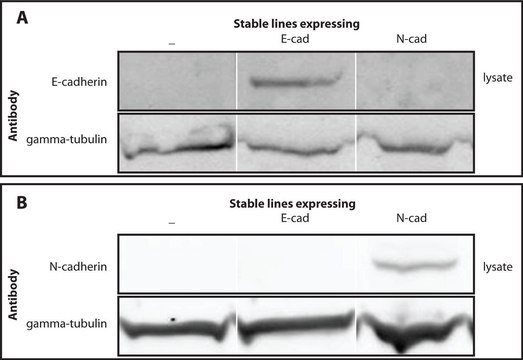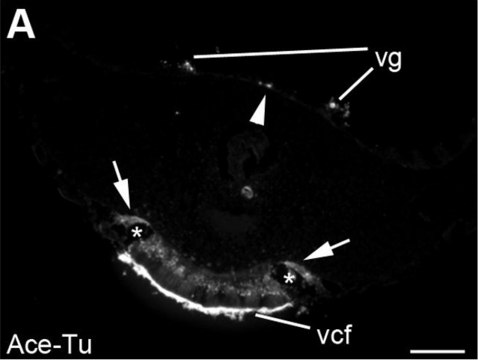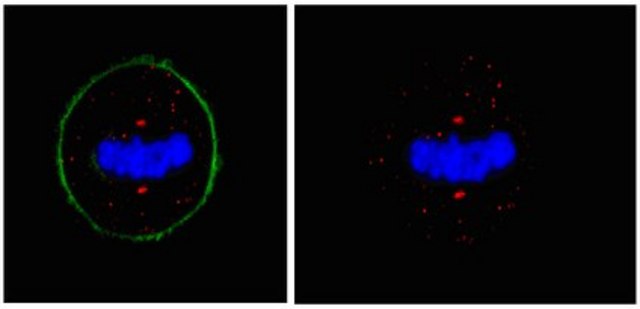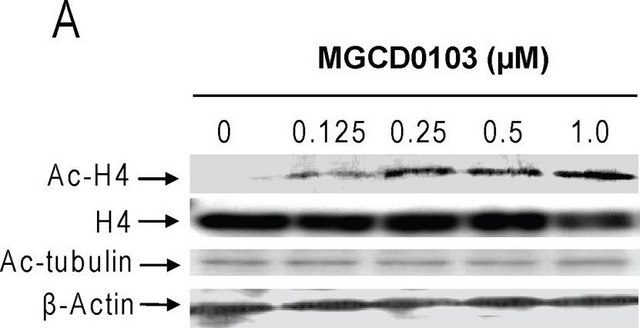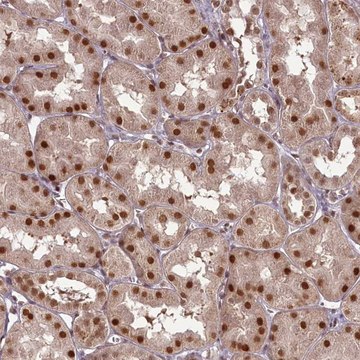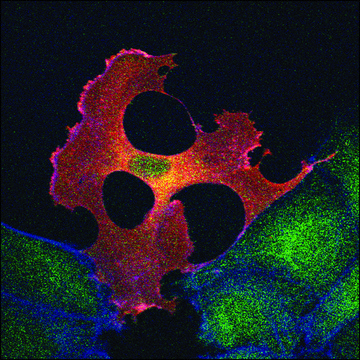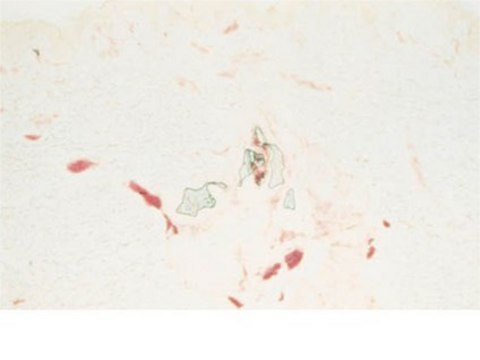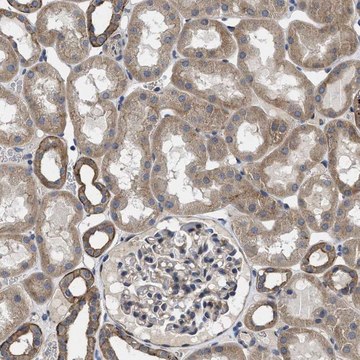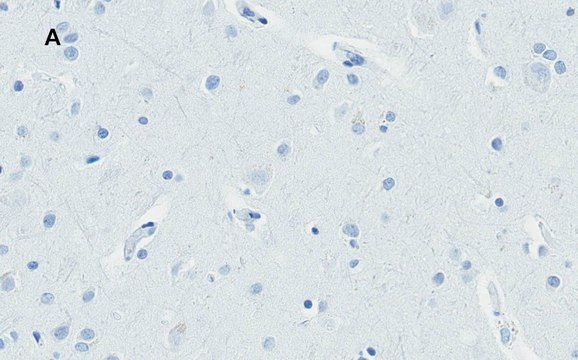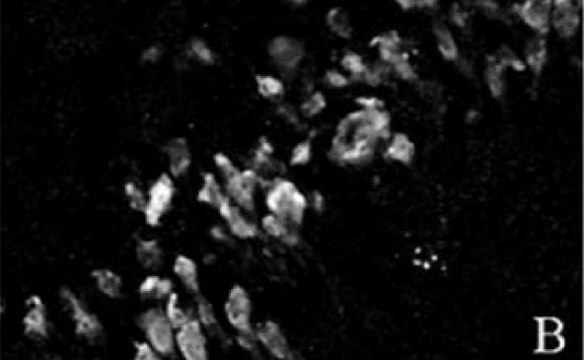06-1292
Anti-Cep63 Antibody
from rabbit, purified by affinity chromatography
Sign Into View Organizational & Contract Pricing
All Photos(2)
Synonym(s):
Centrosomal protein of 63 kDa
UNSPSC Code:
12352203
eCl@ss:
32160702
NACRES:
NA.41
Recommended Products
biological source
rabbit
antibody form
affinity isolated antibody
antibody product type
primary antibodies
clone
polyclonal
purified by
affinity chromatography
species reactivity
human, mouse
technique(s)
immunocytochemistry: suitable
western blot: suitable
NCBI accession no.
UniProt accession no.
shipped in
wet ice
target post-translational modification
unmodified
Gene Information
human ... CEP63(80254)
General description
Centrosomal protein 63 (Cep63) serves an ATM and ATR substrate for spindle assembly activation following chromosomal breakage. It is shown that inactivation of the CEP63 gene in avian DT40 cells impairs spindle assembly and prevents ATM- and ATR-dependent effects on mitosis. Cep63 is also reported to bind to and recruit Cdk1 to centrosomes and is thought to be involved the regulation mitotoic entry, centrosome amplification, and genome maintentance.
Immunogen
Recombinant protein corresponding to human Cep63.
Application
Immunocytochemistry Analysis: A representative lot detected Cep63 in U20S cells. (Nicola Brown, CRUK Clare Hall Laboratories, London, UK)
Research Category
Epigenetics & Nuclear Function
Epigenetics & Nuclear Function
Research Sub Category
Cell Cycle, DNA Replication & Repair
Cell Cycle, DNA Replication & Repair
Use Anti-Cep63 Antibody (Rabbit Polyclonal Antibody) validated in WB, ICC to detect Cep63 also known as Centrosomal protein of 63 kDa.
Quality
Evaluated by Western Blot in HEK293 cell lysate.
Western Blot Analysis: A 1: 500 dilution of this antibody detected Cep63 in 10 µg of HEK 293 cell lysate.
Western Blot Analysis: A 1: 500 dilution of this antibody detected Cep63 in 10 µg of HEK 293 cell lysate.
Target description
~63 kDa observed. Different isoforms or uncharacterized bands may be observed in some endogenous cell lysates. Experiments using transfected cells and siRNA have confirmed detection of Cep63.
Physical form
Affinity purified
Purified rabbit polyclonal in buffer containing 0.1 M Tris-Glycine (pH 7.4), 150 mM NaCl with 0.05% sodium azide.
Storage and Stability
Stable for 1 year at 2-8°C from date of receipt.
Analysis Note
Control
HEK 293 cell lysate
HEK 293 cell lysate
Disclaimer
Unless otherwise stated in our catalog or other company documentation accompanying the product(s), our products are intended for research use only and are not to be used for any other purpose, which includes but is not limited to, unauthorized commercial uses, in vitro diagnostic uses, ex vivo or in vivo therapeutic uses or any type of consumption or application to humans or animals.
WGK
WGK 1
Flash Point(F)
Not applicable
Flash Point(C)
Not applicable
Certificates of Analysis (COA)
Search for Certificates of Analysis (COA) by entering the products Lot/Batch Number. Lot and Batch Numbers can be found on a product’s label following the words ‘Lot’ or ‘Batch’.
Already Own This Product?
Find documentation for the products that you have recently purchased in the Document Library.
Jieyi Xiong et al.
Human molecular genetics, 27(8), 1474-1485 (2018-02-17)
Although splicing is widespread and evolves rapidly among species, the mechanisms driving this evolution, as well as its functional implications, are not yet fully understood. We analyzed the evolution of splicing patterns based on transcriptome data from five tissues of
Denis Fortun et al.
IEEE transactions on medical imaging, 37(5), 1235-1246 (2018-05-05)
The imaging of proteins within macromolecular complexes has been limited by the low axial resolution of optical microscopes. To overcome this problem, we propose a novel computational reconstruction method that yields isotropic resolution in fluorescence imaging. The guiding principle is
Marine H Laporte et al.
Cell, 187(9), 2158-2174 (2024-04-12)
Centriole biogenesis, as in most organelle assemblies, involves the sequential recruitment of sub-structural elements that will support its function. To uncover this process, we correlated the spatial location of 24 centriolar proteins with structural features using expansion microscopy. A time-series
Georgios N Hatzopoulos et al.
Nature communications, 12(1), 3805-3805 (2021-06-23)
Centrioles are evolutionarily conserved multi-protein organelles essential for forming cilia and centrosomes. Centriole biogenesis begins with self-assembly of SAS-6 proteins into 9-fold symmetrical ring polymers, which then stack into a cartwheel that scaffolds organelle formation. The importance of this architecture
The human sperm basal body is a complex centrosome important for embryo preimplantation development.
Farners Amargant et al.
Molecular human reproduction, 27(11) (2021-09-29)
The mechanism of conversion of the human sperm basal body to a centrosome after fertilization, and its role in supporting human early embryogenesis, has not been directly addressed so far. Using proteomics and immunofluorescence studies, we show here that the
Our team of scientists has experience in all areas of research including Life Science, Material Science, Chemical Synthesis, Chromatography, Analytical and many others.
Contact Technical Service